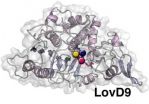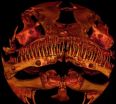(Press-News.org) Several medications can help people with alcohol use disorders maintain abstinence or reduce drinking, according to research from the University of North Carolina at Chapel Hill.
The work, published today in the Journal of the American Medical Association (JAMA) and funded by the Agency for Healthcare Research and Quality (AHRQ), provides additional options for clinicians to effectively address this global concern.
Although alcohol use disorders are associated with many health problems, including cancers, stroke and depression, fewer than one-third of people with the disorders receive any treatment and less than 10 percent receive medications to help reduce alcohol consumption.
"There are many studies that have tried to show whether certain medications can help with alcohol use disorders, but it is a lot of information to digest and many providers do not know what works or doesn't work," said Daniel Jonas, lead author of the study and professor in the department of medicine and the Cecil G. Sheps Center for Health Services Research. "When you synthesize all the evidence, it shows pretty clearly that some medications do work."
Jonas led a team from the RTI-UNC Evidence-based Practice Center to review published studies examining the use of drugs to treat alcohol use disorders. The researchers conducted a systematic review of 122 randomized controlled trials and one cohort study. They then graded the strength of the evidence on the impact of drugs on alcohol consumption.
They found that two drugs, acamprosate (brand name Campral) and oral naltrexone (brand name Revia), have the best evidence supporting their benefits. Both drugs reduced return to drinking and improved other drinking outcomes. Among medications used off-label (i.e., those not FDA approved for alcohol use disorders), moderate evidence showed improvement in some drinking outcomes for topiramate and nalmefene.
"The health implications of preventing return to drinking and reducing alcohol consumption are substantial," said Jonas. "Modeling studies have shown that such improvements would result in significant reductions in alcohol-attributable mortality, costs from health care, arrests and motor vehicle accidents."
"This work expands upon the growing evidence that medications can play a valuable role in the treatment of alcohol use disorders," said James Garbutt, professor of psychiatry and scientist at UNC's Bowles Center for Alcohol Studies and senior author on the paper. "We are hopeful that this information will encourage clinicians to strongly consider these medications and that individuals will gain awareness that there are medications that can help them to stop or significantly reduce their alcohol use."
The study was developed by the AHRQ-funded RTI-UNC Evidence-based Practice Center is a collaboration between RTI International and the University of North Carolina at Chapel Hill. Jonas co-directs the center with Meera Viswanathan at RTI. The review is an update of the first product of the center, which was published in 1999 in JAMA. Since 1999, there has been more than a tenfold increase in the number of individuals studied in controlled clinical trials of naltrexone and acamprosate, and many trials of medications that are not FDA-approved.
INFORMATION:
Medications can help adults with alcohol use disorders reduce drinking
2014-05-13
ELSE PRESS RELEASES FROM THIS DATE:
Clean air in Iowa
2014-05-13
With warmer weather, it's time to get outdoors. And now you can breathe easy about it: A new study from the University of Iowa reports Iowa's air quality falls within government guidelines for cleanliness.
The UI researchers analyzed air quality and pollution data compiled by state and county agencies over nearly three years at five sites spread statewide—urban areas Cedar Rapids, Davenport and Des Moines and rural locations in Montgomery county in southwest Iowa and Van Buren county in the southeast. The result: The air, as measured by a class of fine particulate pollutants ...
Scientists reveal structural secrets of enzyme used to make popular anti-cholesterol drug
2014-05-13
In pharmaceutical production, identifying enzyme catalysts that help improve the speed and efficiency of the process can be a major boon. Figuring out exactly why a particular enzyme works so well is an altogether different quest.
Take the cholesterol-lowering drug simvastatin. First marketed commercially as Zocor, the statin drug has generated billions of dollars in annual sales. In 2011, UCLA scientists and colleagues discovered that a mutated enzyme could help produce the much sought-after pharmaceutical far more efficiently than the chemical process that had been ...
Novel ORNL technique enables air-stable water droplet networks
2014-05-13
OAK RIDGE, Tenn., May 13, 2014 -- A simple new technique to form interlocking beads of water in ambient conditions could prove valuable for applications in biological sensing, membrane research and harvesting water from fog.
Researchers at the Department of Energy's Oak Ridge National Laboratory have developed a method to create air-stable water droplet networks known as droplet interface bilayers. These interconnected water droplets have many roles in biological research because their interfaces simulate cell membranes. Cumbersome fabrication methods, however, have limited ...
Evolutionary biologists glimpse early stages of Y-chromosome degeneration
2014-05-13
TORONTO, ON – In many species, the possession of X and Y chromosomes determines whether an individual develops into a male or female. In humans, for example, individuals who inherit their father's Y chromosome become male (XY), and individuals who inherit their father's X chromosome become female (XX).
This system of sex determination has evolved independently multiple times and a striking feature of its evolution is that Y chromosomes have degenerated genetically, losing many genes over time. What is not well understood, however, is what happens to the Y chromosome during ...
Surprising global species shake-up discovered
2014-05-13
The diversity of the world's life forms — from corals to carnivores — is under assault. Decades of scientific studies document the fraying of ecosystems and a grim tally of species extinctions due to destroyed habitat, pollution, climate change, invasives and overharvesting.
Which makes a recent report in the journal Science rather surprising.
Nick Gotelli, a professor at the University of Vermont, with colleagues from Saint Andrews University, Scotland, and the University of Maine, re-examined data from one hundred long-term monitoring studies done around the world ...
Cancer stem cells under the microscope at Albert Einstein College of Medicine symposium
2014-05-13
May 13, 2014 – (BRONX, NY) – Healthy stem cells work to restore or repair the body's tissues, but cancer stem cells have a more nefarious mission: to spawn malignant tumors. Cancer stem cells were discovered a decade ago, but their origins and identity remain largely unknown.
Today, the Ruth L. and David S. Gottesman Institute for Stem Cell and Regenerative Medicine Research at Albert Einstein College of Medicine of Yeshiva University hosted its second Stem Cell Symposium, focusing on cancer stem cells. Leading scientists from the U.S., Canada and Belgium discussed ...
Algorithm enables computers to identify actions much more efficiently
2014-05-13
With the commodification of digital cameras, digital video has become so easy to produce that human beings can have trouble keeping up with it. Among the tools that computer scientists are developing to make the profusion of video more useful are algorithms for activity recognition — or determining what the people on camera are doing when.
At the Conference on Computer Vision and Pattern Recognition in June, Hamed Pirsiavash, a postdoc at MIT, and his former thesis advisor, Deva Ramanan of the University of California at Irvine, will present a new activity-recognition ...
Mayo Clinic study identifies strategies that reduce early hospital readmissions
2014-05-13
ROCHESTER, Minn. — May 13, 2014 — A Mayo Clinic review of 47 studies found that 30-day readmissions can be reduced by almost 20 percent when specific efforts are taken to prevent them. Key among these are interventions to help patients deal with the work passed on to them at discharge. The results of the review are published in this week's issue of JAMA Internal Medicine.
"Reducing early hospital readmissions is a policy priority aimed at improving quality of care and lowering costs," says Aaron Leppin, M.D., a research associate in Mayo Clinic's Knowledge and Evaluation ...
Novel protein fragments may protect against Alzheimer's
2014-05-13
The devastating loss of memory and consciousness in Alzheimer's disease is caused by plaque accumulations and tangles in neurons, which kill brain cells. Alzheimer's research has centered on trying to understand the pathology as well as the potential protective or regenerative properties of brain cells as an avenue for treating the widespread disease.
Now Prof. Illana Gozes, the incumbent of the Lily and Avraham Gildor Chair for the Investigation of Growth Factors and director of the Adams Super Center for Brain Studies at the Sackler Faculty of Medicine and a member ...
A tiny, toothy catfish with bulldog snout defies classification
2014-05-13
PHILADELPHIA (May 13, 2014)— Kryptoglanis shajii is a strange fish – and the closer scientists look, the stranger it gets. This small subterranean catfish sees the light of day and human observers only rarely, when it turns up in springs, wells and flooded rice paddies in the Western Ghats mountain region of Kerala, India. It was first described as a new species in 2011.
Soon after that, John Lundberg, PhD, one of the world's leading authorities on catfishes, started taking a closer look at several specimens.
"The more we looked at the skeleton, the stranger it got," ...




